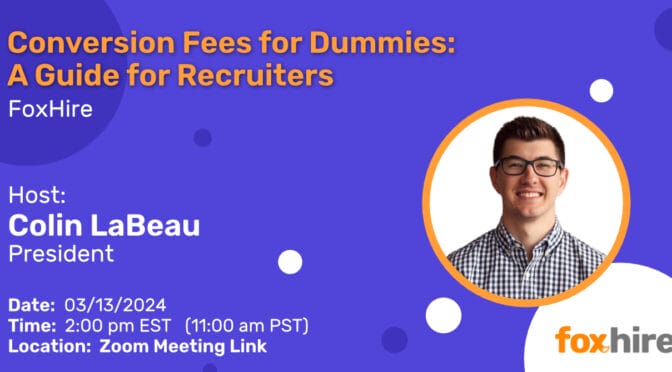In the competitive world of talent acquisition, organizations often partner with multiple staffing vendors to meet their workforce needs. While this approach can provide access to a diverse talent pool, it can also lead to inefficiencies if not managed properly. In fact, according to SIA’s “2024 Workforce Solutions Buyer Survey”, the consolidation of staffing suppliers was a top priority for staffing buyers. So, how many staffing vendors is too many? Let’s explore the factors that influence the optimal number of vendors and the risks of overextending your vendor relationships.
The Benefits of Multiple Staffing Vendors
Before diving into the potential pitfalls, it’s important to understand why businesses work with multiple staffing vendors. Here are some advantages:
- Access to Diverse Talent: Different vendors may specialize in various industries, skill sets, or regions. Working with multiple vendors allows you to tap into a broader pool of candidates with the expertise your organization needs.
- Competitive Rates: With multiple vendors vying for your business, you can compare rates and services, potentially securing better terms for your staffing needs.
- Specialized Expertise: Some vendors are better equipped to fill niche roles. Having a range of vendors ensures that you have access to experts in a variety of fields.
- Reduced Risk of Bottlenecks: Relying on a single vendor could leave you vulnerable to delays or shortages in talent supply. Multiple vendors ensure that you have a backup if one provider is unable to meet your demands.
When Too Many Vendors Becomes a Problem
While working with several staffing vendors can bring flexibility, there comes a point where managing too many vendors can result in diminishing returns. Here are some signs that you may have too many staffing vendors:
- Inconsistent Quality of Candidates
The more vendors you have, the harder it becomes to maintain quality control. Different vendors may have varying standards for candidate vetting, which can lead to inconsistencies in the quality of talent delivered. The lack of a centralized system for vetting candidates can lead to hiring mismatches and increase the time needed to screen and onboard new hires. - Administrative Overload
Managing multiple contracts, invoices, and compliance checks across numerous vendors can quickly become overwhelming. HR departments can get bogged down with administrative tasks, leaving less time for strategic planning and workforce development. An excess of vendors may cause delays in payments, miscommunication, or compliance errors, leading to operational inefficiencies. - Lack of Accountability
When too many vendors are involved, it’s difficult to pinpoint accountability if something goes wrong. The more vendors you work with, the easier it is for issues like delayed placements, poor performance, or miscommunication to fall through the cracks. With so many stakeholders, it can become unclear who is responsible for solving problems, leading to frustration and finger-pointing. - Diluted Vendor Relationships
A staffing vendor is more than just a service provider—they should be a strategic partner who understands your business’s unique needs. When you spread your attention across too many vendors, you dilute these relationships. Vendors who receive a smaller portion of your business may not prioritize you, potentially leading to reduced service quality and slower response times. - Higher Costs
At first, working with multiple vendors may seem like a way to drive down costs through competition. However, managing numerous vendors may increase your total operational costs. From additional administrative burdens to potential compliance risks, the savings from competitive rates may be negated by inefficiencies and errors that arise from juggling too many vendors.
Finding the Optimal Number of Vendors
The ideal number of staffing vendors varies depending on the size and complexity of your organization’s workforce needs. Here are a few considerations for finding the right balance:
- Evaluate Your Staffing Needs
Consider the volume and frequency of your staffing requirements. If your business needs to hire specialized talent or operate in multiple locations, a few specialized vendors might suffice. On the other hand, if your organization requires high-volume staffing across diverse industries, partnering with more vendors may make sense. - Build Strong Vendor Relationships
Focus on quality, not quantity. A smaller number of vendors who deeply understand your business and have proven track records can deliver better results than a large pool of mediocre providers. Building strong relationships with your key vendors can improve communication, service quality, and candidate success rates. - Consolidate When Possible
Consider consolidating your vendor list to focus on top-performing partners. Vendors with a solid history of delivering high-quality candidates and excellent service should take priority. This consolidation will reduce administrative burdens and streamline processes while ensuring you still have access to the right talent. - Leverage Vendor Management Systems (VMS)
If your business needs to work with multiple vendors, a Vendor Management System (VMS) can help streamline and optimize the process. A VMS enables you to manage your vendor relationships, track performance, and centralize invoicing and compliance checks. This technology can be a powerful tool for keeping your staffing strategy organized, even with a larger number of vendors.
The Role of an Employer of Record (EOR) in Managing Vendors
For companies dealing with the complexities of staffing, an Employer of Record (EOR) can serve as a valuable partner. An EOR handles the administrative and legal responsibilities associated with hiring, onboarding, and managing employees or contractors across multiple vendors. By acting as a single point of contact for employment-related matters, an EOR simplifies vendor management, reduces compliance risks, and ensures consistency across all vendors.
Organizations that are looking to consolidating staffing vendors through an EOR can see value through the below mechanisms:
- Invoicing: Consolidating invoicing is one of the main benefits EOR clients gain when working through an EOR to engage staffing agencies. Rather than reconciling and paying 20 different invoices every week, staffing buyers can pay one invoice. This makes the accounts payable process much simpler, easier, and faster.
- Compliance: Since the EOR will be the employer for all temps, this ensures compliance through one entity. EORs are stronger compliance organizations, ensuring your company and temporary staff are protected.
- Technology: Many staffing firms use all different types of technologies. Knowing how to engage with each technology can be confusing. Consolidating your staffing agencies through one EOR platform enables your company to adopt one technology for timesheets, invoicing, visibility and more. This simplifies the communications between staffing vendors and clients, saving time and effort each week.
Conclusion
There’s no one-size-fits-all answer to the question of how many staffing vendors are too many. The right number of vendors depends on your organization’s needs, the quality of vendor relationships, and your capacity to manage them effectively.
If you find yourself overwhelmed by administrative tasks, inconsistent candidate quality, or diluted relationships, it may be time to reassess your vendor strategy. Consolidating your vendor list and focusing on building strong partnerships with a select few can often deliver better results than spreading your resources too thin.
For businesses seeking a simplified approach to vendor management, partnering with an EOR can help centralize employment processes and mitigate the challenges of working with multiple staffing vendors.





